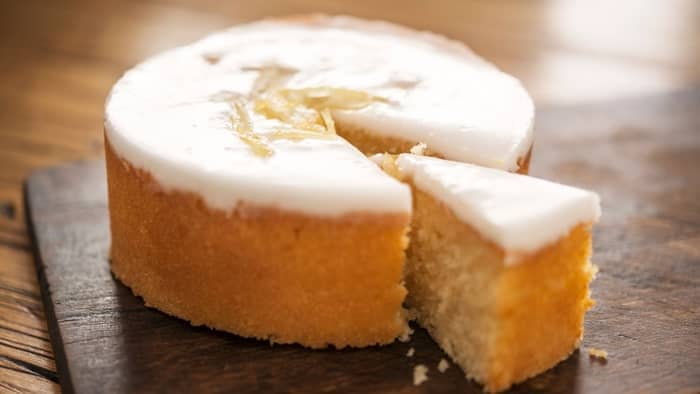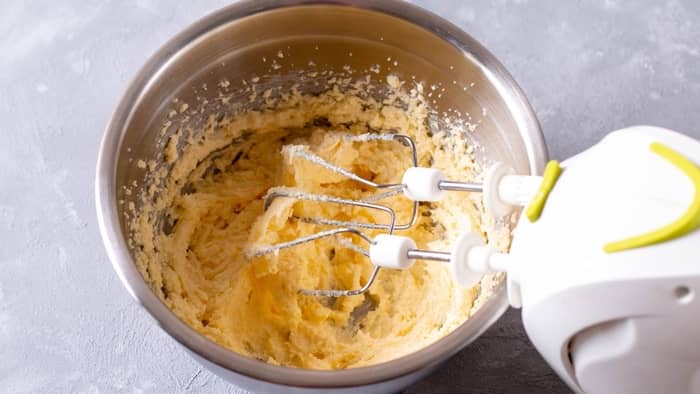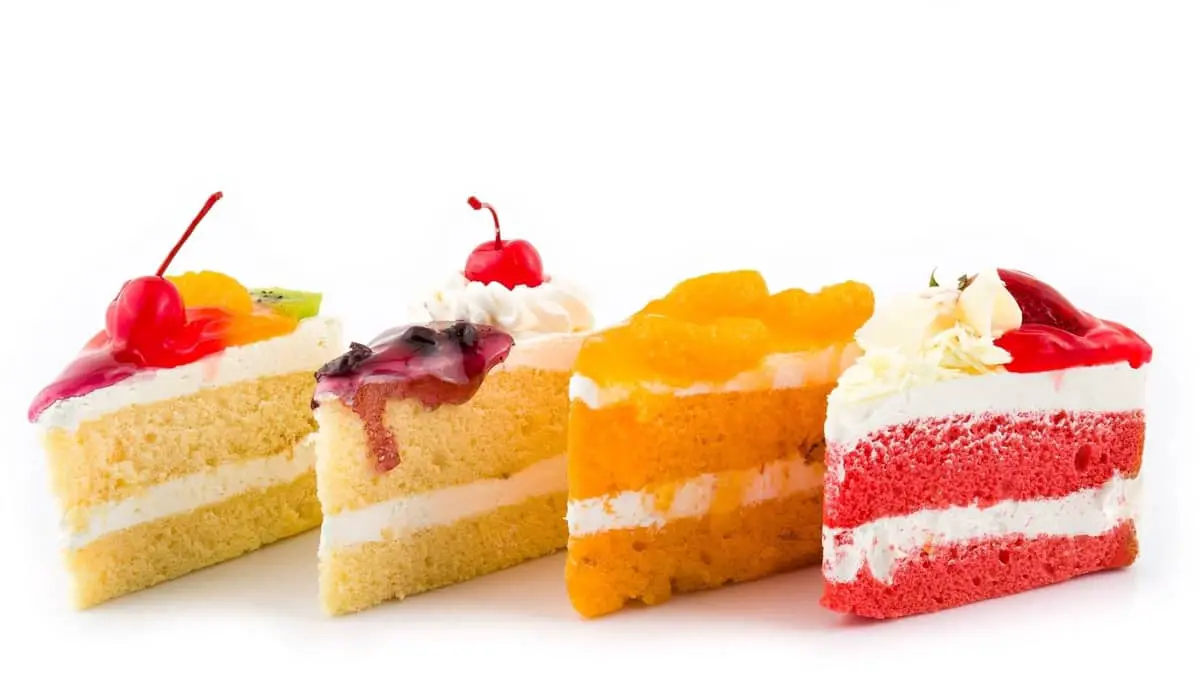Last Updated on August 15, 2022
When searching for cake recipes, you can easily find how to make moist cakes. However, the recipes do not include how to make a cake moist after baking.
Remember that a few easy tricks like properly wrapping and storing your cake will make a distinguishable difference in your cake’s moistness.
Additionally, keeping your cake nice and moist after baking is not tricky, but it will require extra steps. Not only that, but also a moist cake will begin with the right recipe, and a good cake recipe will ensure that you will have a super moist cake.
Next, you can choose the best methods that you can use, like frosting your cake as soon as possible after it has cooled entirely. Likewise, you can put a simple syrup over your cake’s layers to ensure that you will have a moist cake that everyone will undoubtedly adore after baking.
How To Make A Cake Moist After Baking?
For the most part, why do cakes dry out after baking? Remember, there are several reasons why you end up with a dry cake, and these reasons are; you might be using the wrong ingredients, you have made a mistake when mixing your cake batter, you were baking your cake for too long, or you were baking your cake at a high temperature. If you successfully avoid these common mistakes, you will have a moist cake every time.
Also, preparing your cake batter is essential to prevent having dry cakes. You have to consider that mismeasuring your ingredients when making a cake is one of the main reasons you have a dry cake.
Furthermore, not all flours weigh the same; a cup of all-purpose flour is heavier than a cup of cake flour. So, to provide an accurate measurement, use a kitchen scale. It will also help to aerate your flour using a whisk before measuring it.
Next is finding a simple and tested cake recipe because your recipes should have the correct ratio of ingredients. In addition to that, the other thing to consider is to use a proper baking pan.
In that regard, the right baking pan can make a big difference in preventing a dry cake. Also, non-stick pans and dark pans are better for heat conduction than glass and silicone molds that do not conduct heat well.
Nonetheless, checking your oven’s temperature and knowing your baking time are essential to prevent dry cakes.

Soft and moist cakes
What makes cake soft and moist? In most cases, baking the perfect cake is like making art. For that reason, many novice bakers are wondering what makes a cake soft and moist. Here are some guides that you can use to make your cake moist and soft.
The correct temperature is essential
Please consider that the correct temperature of every ingredient plays a crucial role. Because of that, flour and eggs, for example, need to be at room temperature, and the butter should be warm.
Carefully fold in your flour
When folding your batter mixture, make the figure 8 motion and avoid over-mixing your cake batter.
Use buttermilk
Buttermilk has a high acidic content which makes a cake softer. If you are using buttermilk in a cake recipe that does not use baking soda, add a little bit of baking soda.
Choose the suitable flour
Cakes made with cake flour are much lighter and fluffier than other cakes made with all-purpose flour.
Be sure to sift your dry ingredients
Sifting adds air into your mixture, making it lighter. Because of that, sift your flour and baking soda before using these ingredients for your batter.
Beat your eggs slowly
In most cases, ensure to beat your eggs properly; add 1/3 of your egg into the butter and sugar mixture. Then, whip using an electric mixer. Afterward, add the rest of your egg until it becomes slimy.
Apply sugar syrup
You may add sugar syrup to your cake layers to keep them moist before frosting.
Cream your butter and sugar
Remember, beating your butter and sugar is an important tip to make your cake moist. Also, you can whisk your butter and sugar until it becomes light and fluffy.

Frost your cake
After cooling your cake completely, frost your cake to keep it moist.
Keeping Cake Moist
How to keep cake moist? Essentially, many factors can explain why you have a dry cake, from preparing your cake batter to even during or after baking. However, there are good techniques that you could use to keep your cake moist.
Use cake flour
In most cases, if your cake recipe requires all-purpose flour, opt for cake flour to have a more moist and tender crumb cake. Remember, adding sour cream and buttermilk can help moisten your cake.
Avoid overmixing
Over-beating your butter can trap too many air bubbles, deflating when baking and resulting in a dense cake. In addition to that, overmixing your cake batter can create too much gluten making your cake dry and tough.
Avoid overbaking your cake
You must consider that the baking time of your cake depends on the size of your cake, so it is advisable to follow the recipe. Upon reaching the end of the recommended baking time, test the doneness of your cake.
Soak your cake and add moisture between the layers
For the most part, you can soak your cake in a simple syrup after it comes out of the oven. You can apply the simple syrup by using a pastry brush across the top and the sides of your cake. To add moisture between your cake’s layers, use wet fillings like cherry pie filling or chocolate mousse.
Stand Mixer, Facelle 660W Household Kitchen Standing Mixer Dough Mixer
Frost your cake and store it properly
After baking your cake, allow it to cool completely and frost it immediately to preserve your cake’s moisture. Not only that, but also store your cake properly; cover your cake in plastic wrap, then in aluminum foil. Remember that this technique will seal your cake’s moisture and prevent the air from making your cake dry.
Moreover, how long should cake rest after baking? After baking your cake, you should remove it from the oven and allow your cake to sit over the counter for about thirty minutes or more.
You to consider that if you do not want your cake to be cold, you can let it cool on your counter for approximately an hour or two; this will allow the heat out of your cake, making it more workable when adding your design. Besides, if you do not allow your cake to rest correctly, it could crack or become watery.
Also, when frosting your cake, ensure that your cake has cooled completely before applying a crumb coat, and chill your cake for about thirty minutes before using your frosting.
Furthermore, you can use a toothpick or a wooden skewer to tell if your cake has cooled completely. Then, stick it on your cake and allow it to stay on your cake for about a few seconds, and remove it. Remember, taste and feel the toothpick or skewer if it is still hot and needs more time to cool down.
Read more about How To Moisten Cookies After Baking – 3 Foolproof Easy Ways
FAQs
Why Do Cakes Dry Out After Baking?
The reasons why cakes dry out after baking are using the wrong ingredients, making mistakes when blending the cake batter, baking the cake for too long, and baking the cake at a high temperature.
What Makes Cake Soft And Moist?
You have to keep in mind that there are many ways to make cakes soft and moist; the correct temperature is essential; choose the suitable flour, beat your eggs slowly, and ensure to sift your dry ingredients.
How To Keep Cake Moist?
In most cases, many factors can explain why you have dry cake. In addition to that, it could happen before, during, or even after baking. So with that, if you have dry cake, please avoid overmixing and avoid overbaking the cake. Also, use cake flour, frost the cake, and store it correctly.
How Long Should Cake Rest After Baking?
Most of the time, it would be best to allow your cake to rest for around thirty minutes over the kitchen counter after you have baked the cake.

Zarah is an experienced pastry chef whose creations have delighted countless customers. With a passion for baking, Zarah has developed a unique style that combines classic techniques with modern flavors. Her desserts are consistently crafted with the finest ingredients, and her attention to detail is evident in the stunning and delectable results. Zarah has a wealth of experience in the pastry kitchen, and loves to share her knowledge with others. Whether it is teaching a class or creating a custom cake for a special occasion, Zarah is committed to making sure every customer is satisfied.


